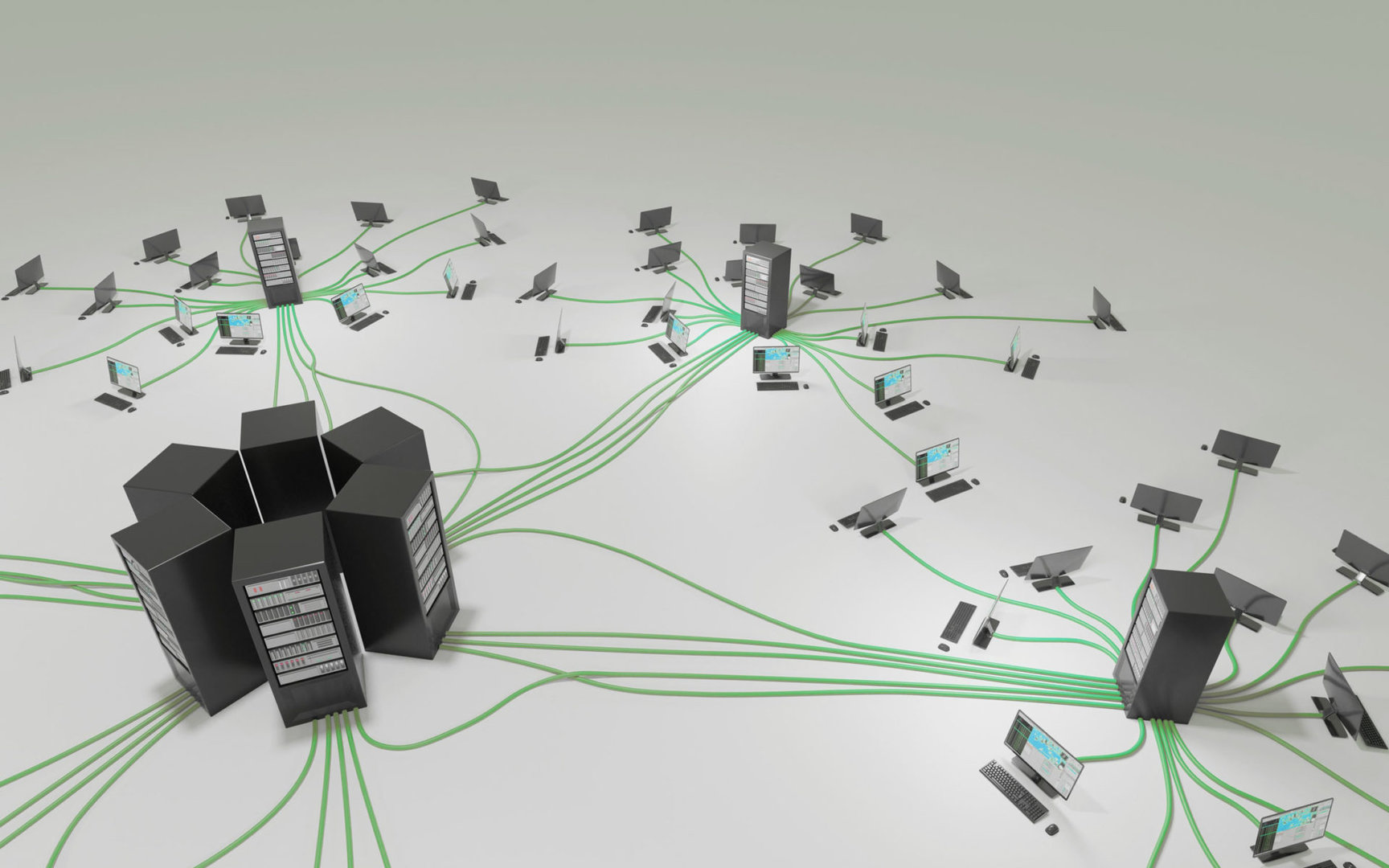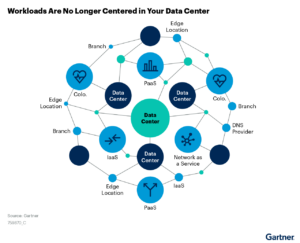Leave Nothing to Chance: Risk Mitigation For Hybrid Data Center Platforms

Managing a distributed IT environment can be a significant risk mitigation challenge for companies in today’s digital era. As businesses increasingly rely on dynamic and always-on IT infrastructure, continuous availability has become a necessity. Failing to meet this demand poses risks to a company’s overall success and longevity.
Data centers are essential for modern businesses – they provide a secure location to manage and protect digital assets, process and analyze data, and ensure reliable and continuous operation. These days businesses are lucky to have even more choices than ever before on where their data center resides. In most cases, the centralized company data center no longer resides in just one place. Today’s company data center footprint has increased far beyond the walls of the business or headquarters. Although modern data center architectures are growing increasingly distributed, the responsibility to ensure uptime, access, and functional integration of IT assets across the business remains a high business priority.

CIOs Are Adapting to the Challenges of Managing a Distributed IT Environment
In the past, it may have been easier to manage a single central data center and support the business IT needs. But modern businesses need dynamic IT environments to deliver rapid services, unlock localized performance, gain competitive advantage with new technology, and extend their reach in digital ecosystems and across geographic boundaries. These objectives and more have pushed the boundaries of the centralized data center, and CIOs are rapidly implementing entirely new frameworks that are adapted for global infrastructure and all its associated services.
If that sounds like a big task – it is. Add the fact that all workloads are not created equally, and you can see why IT teams are working hard to build connected IT environments that leverage many different infrastructure types. They can leverage the speed of the cloud, outsource steady-state environments to colocation data centers, use the edge to solve latency concerns, and add next-generation applications to their business plans. The best opportunity for business potential lies in the ability to place workloads correctly and stretch infrastructure in an integrated manner via an interconnected hybrid platform.
Data Center Ownership Is Onerous – Colocation Leads With Risk Mitigation
This is exactly where colocation services come into play – an interconnected and cost-effective hub for the hybrid platform. Partnering with a colocation provider is critical for future infrastructure planning and fast outpacing the use of on-premise data centers. Colocation data centers have far more network solutions and managed services that are ready on-demand to integrate, connect, and protect compute environments better than businesses can often replicate in-house.
Secondly, businesses face challenges in managing on-premise infrastructure that outweigh the lagging benefits of in-house computing. Higher density requirements involve retrofitting existing equipment to cool denser and more power-hungry data halls. Sustainability demands are pushing for greater efficiency and resource management than ever before. The technology coming down the pipe requires more power and cooling to offset the heat. Even small businesses can benefit from a national and global reach. All this innovation is happening at the same time as enterprises are reducing their physical headquarters and staff is working remotely.
Mitigating Risks through Facility Design, Security, and Business Continuity Solutions
Now that we understand the expanding data center landscape let’s take a closer look at colocation’s role in managing an everywhere-infrastructure.
Facility Design
Considerable care is placed on having the most secure and safe location possible before the colocation data centers are even built. For companies that house their data center inside their headquarters, the disaster readiness of the site, access to reliable power and network resources, or robust security installations may have taken a back seat to the primary role of the business office. On the other hand, third-party providers are diligently focused on-site locations as the core mission of the data center operator is clear, and the facility is designed to prioritize data center services first and foremost.
Colocation data center providers select locations that balance in-depth risk assessments with proximity to urban centers. In this manner, they can support customers and mitigate regional or geographic risks associated with that area. For example, Element Critical’s Houston data center is built with a roof rated to withstand 190+ mile-an-hour winds. The site has already weathered local hurricanes precisely as it was designed to do. The Chicago data centers in the suburbs have access to ample power supplies, and cold Chicago air offsets cooling costs. In other words, colocation data centers are not governed by the same limiting factors of the business headquarters or offices. They are built to idealize the region’s benefits and withstand regional impacts.
After location, the next priority to design data centers with built-in redundancy. This would include power redundancy, geographic redundancy, and network redundancy. All Element Critical data centers offer fully redundant primary power feeds, backup generation, and uninterruptable power supply (UPS) systems. These systems apply to supporting customer environments on the data center floor as well as backups for all critical mechanical equipment. Our customers can connect their equipment to these redundant power systems via dual power circuit feeds, ensuring a seamless failover in the event one of the circuits goes down.
For customers that require geographic redundancy, Element Critical data centers are located on the east and west coasts, north and south urban centers to deliver geo-redundancy across the nation. This helps customers prepare a range of disaster recovery solutions for backing up mission-critical applications and ensuring they are distributed out of harm’s way.
Security
There’s no sugar-coating it, data centers house vital IT technology. Not only do they store millions of dollars in equipment, the data, and applications customers secure inside their data center are of incalculable value.
This calls for a multi-layered approach to physical security to identify unauthorized visitors and prevent unauthorized access. Data centers must be durable and impregnable by bad actors or people who want to get to the customer’s environment or the equipment that supports them.
All sites employ access controls from the street to the customer cage that implement pre-authorization protocols, identification of all entrants, and strict authentication protocols used by a zero-trust philosophy at all data center facilities. This means that every person entering the data center is subject to recurring authentication, and the site is constantly monitored. Here are a few more layers of security in action at Element Critical data centers.
Access Control
- Exterior crash-rated fences and locked gates
- Bullet-proof glass
- Video surveillance
- Locked exterior and interior doors
- Security desk check-in with pre-authorization
- Mantrap at access points to control ingress and egress and prevent tailgating
- Multifactor authentication to verify authorized access from anticipated visitors
- Asset access tracking to define all traffic at the facility and customer environments.
- Downloadable security reporting and certified compliance audits
It is important to balance even the most effective approaches to data center security with logical security strategies that ensure customers and vendors with a valid reason to visit the data center are still able to access the building – as long as they follow a clearly defined process. At Element Critical, customers can set up all authorized persons for their environment within the customer portal. This includes identifying permissions for visitors who may not be regular but need to pass the above security measures.
Data center security efforts also examine what happens once visitors enter the building or the data hall. For this purpose, Element Critical deploys continuous monitoring to sense danger or environmental impact. This can apply to environmental controls to prevent fires or cooling malfunctions, to comprehensive monitoring that ensures visitors access only authorized areas and equipment.
Element Critical data centers take risk management one step further than threat monitoring by enacting penetration testing and regular assessments of each facility. Making these practices protocol is the best way to perfect and enhance the physical security strategy. With regular training intervals, employees are empowered to be a part of the security strategy to build confidence in enforcing access controls, knowing the Element Critical organization will support them.
Business Continuity Solutions
Disaster recovery solutions and high availability sometimes get put together into the same discussion, even though they are quite different – yet they work hand in hand. High availability refers to selecting a provider with a high-performance track record. It is all about protecting systems against threats while they continue running – preventing outages in the first place. Colocation providers can share their track record of uptime with prospective customers and often have service level agreements far more stringent than cloud service providers.
Disaster recovery solutions are all about getting IT systems back online as quickly as possible in the aftermath of an outage. While colocation data centers don’t directly provide disaster recovery, as a neutral provider, Element Critical can connect customers to the best DRaaS implementations, taking business recovery plans to the next level and ensuring continuous uptime is coupled with application disaster recovery for superior business continuity outcomes.
Customers also deploy hot site backups in Element Critical data centers, relocating key business functions to one of our six locations across the United States. This ensures that distributed and replicated environments are out of harm’s way. A business may have a production environment in Houston and a backup recovery set in Austin that replicates the entire environment. In addition to superior reliability, colocation data centers have built-in amenities to support on-site recovery teams in the event of longer stayovers and remote hands when staff cannot make it in person to the data center during a disaster event in another location.
Unlocking the Power of Colocation: Safeguarding the Security of Distributed Data Centers
Mitigating risks in the data center requires the right combination of strategy, architecture design, technology, location, and processes to protect private resources. Enterprises can protect their data center resources by following the practices outlined in this article, but there may be better uses for their resources.
This is particularly true at a time when customers are reporting compute environments are advancing in density and sustainability adherence, which puts plenty of pressure on IT teams to manage and maintain data center systems with all their other responsibilities.
Working with a leading colocation provider can extend IT resources and add additional headcount and services to your team. Plus, the performance of a purpose built facility offers a far more stable business platform to evolve and thrive.
Book a tour of an Element Critical data center in your area today at [email protected]
